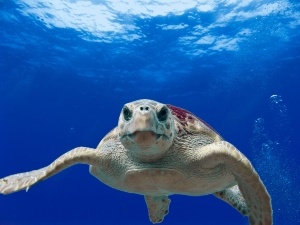
If you are raising turtles then you want the best for them, you want the best food for them, you want the best water for them, and you want the best environment for them, but what if the environment changes for the worst, what if the animal’s tank gets cloudy?
This article is a look into why your turtle’s tank looks cloudy
Table of Contents
Why is my turtle tank cloudy?
A cloudy tank is one of the most common issues that plague turtle owners and raisers, this not only looks bad for the animal but it can also be bad for the animal.
Here is why your pet turtle’s tank looks cloudy and what to do about it:
Microscopic organisms:
If your pet’s tank is new, and you notice that it quickly starts to get cloudy, then this is happening because of the new microscopic organisms in the tank.
Just as with any new habitat, it won’t be uninhabited for very long, a variety of microscopic organisms will start to establish themselves in the water of your aquarium, this will happen within the first days of setting up your tank.
Because there are so many minerals and nutrients in the water the microscopic organisms will quickly multiply and cause the water to become cloudy
All this will happen before the beneficial nitrifying bacteria have a chance to colonize the tank.
What to do:
This phenomenon is very normal, you should let this process take its course and allow the beneficial nitrifying bacteria to colonize the tank and get rid of the microorganisms that are causing the cloudiness in the tank.
As long the ammonia and nitrates in the tank don’t rise too much then the tank, and the turtle in your tank, should be fine.
You don’t have to, and shouldn’t, clean out the tank at this time, doing this will not only get rid of the bad bacteria but it will get rid of the good bacteria too.
If you leave the tank alone then the good bacteria will compete for nutrients, starve out the bad bacteria, and get your water clear again.
Adding turtle-friendly live plants into the tank will also help. Plants meant for turtle tanks will add good bacteria, as well as other microbes, into the tank.
In addition to adding good bacteria, the plants will break down any waste, and uneaten food.
Bacterial imbalance:
This phenomenon is similar to the above but happens in older tanks that have suddenly developed a bacterial imbalance. A bacterial imbalance can develop if you overfeed your turtle or leave waste in the tank
If there aren’t enough nitrifying (good) bacteria available to break down the food in the tank, because there is so much food in the tank, then the bad bacteria will eat the food, overpopulate, and cause your turtle’s tank to become cloudy
This can also happen if there are too many turtles in a tank. Too many turtles will produce too much waste which the bad bacteria will eat
What to do:
Cleaning out the whole tank will usually solve the cloudless problem.
The first thing that you would need to do is remove the excess food in the tank. Keep in mind, when feeding, to only leave in as much food as your turtle needs, and will eat.
Remove any waste from the tank and make sure that the tank you’re using is big enough for the number of turtles in the tank.
If you enjoyed this article then you may also be interested in other turtle/tortoise related articles. Here are some articles that you may be interested in: Why Is My Turtle Not Responding To Touch?, Why Is My Turtle Neck So Long?, Why Is My Turtle Not Using It’s Back Legs, Why Is My Turtle Eating Sand?, Why Is My Turtle Not Growing?, Why Is My Turtle Not Eating In Winter?, Baby Turtle Is Not Eating, Why Is My Turtle Limp?, Why Is My Turtle Not Pooping?

